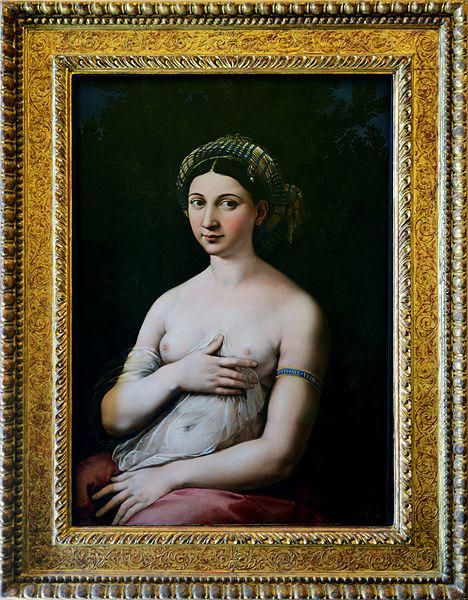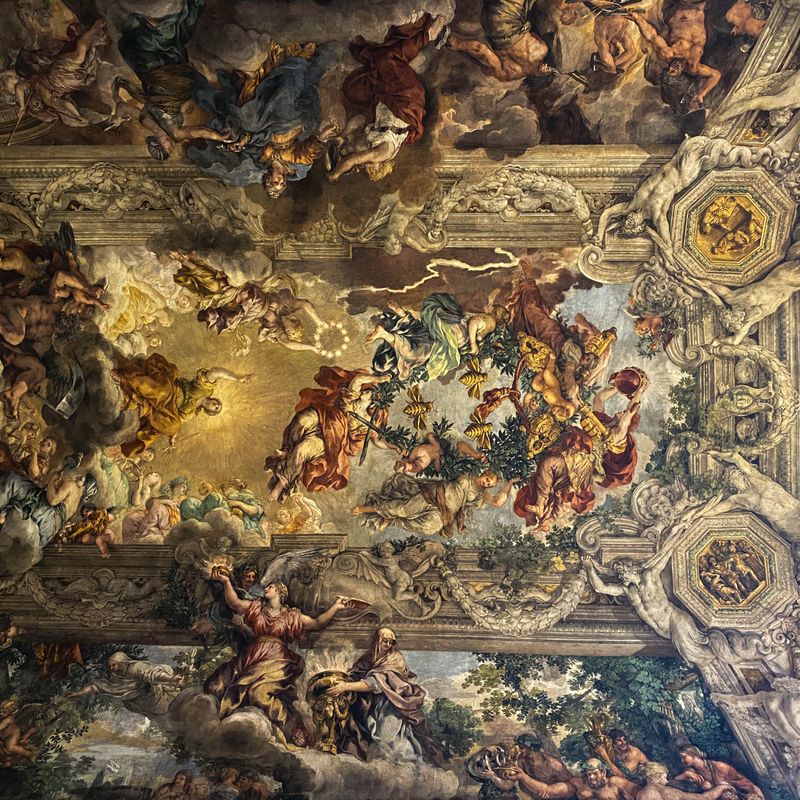
La Fornarina
The Portrait of a Young Woman (also known as La fornarina) is a painting by the Italian High Renaissance master Raphael, made between 1518 and 1519. It is in the Galleria Nazionale d'Arte Antica in Palazzo Barberini, Rome.
It is probable that the picture was in the painter's studio at his death in 1520, and that it was modified and then sold by his assistant Giulio Romano.
Art-history tradition or legend identifies the woman as the fornarina ("baker" or "baker's daughter") Margherita Luti, Raphael's Roman lover who refused to marry him, though this identification has been questioned. An alternative view sees the work not as a portrait of a specific woman, but rather as Raphael's interpretation of a belle donne genre and a depiction of a courtesan. Still another interpretation identifies the figure as a witch.
Description of painting
The painting depicts a nude woman wearing a thin veil to cover her lower abdomen and is seen half covering her left breast. She wears a blue and yellow turban over her dark hair; a thicker red cloth covers her legs and genital region. The figure appears healthy with smooth skin, full proportions and a faint pink tint in her cheeks. Her eyes are looking towards the left, and she wears a small, possibly amused smile. La Fornarina is also wearing an armband engraved with the painter's signature, "Raphael Vrbinas".
between 1518 and 1519
Oil on wood
85.0 x 60.0 cm
Image and text courtesy of Wikipedia, 2023
Where you'll find this

Palazzo Barberini
Permanent collection




